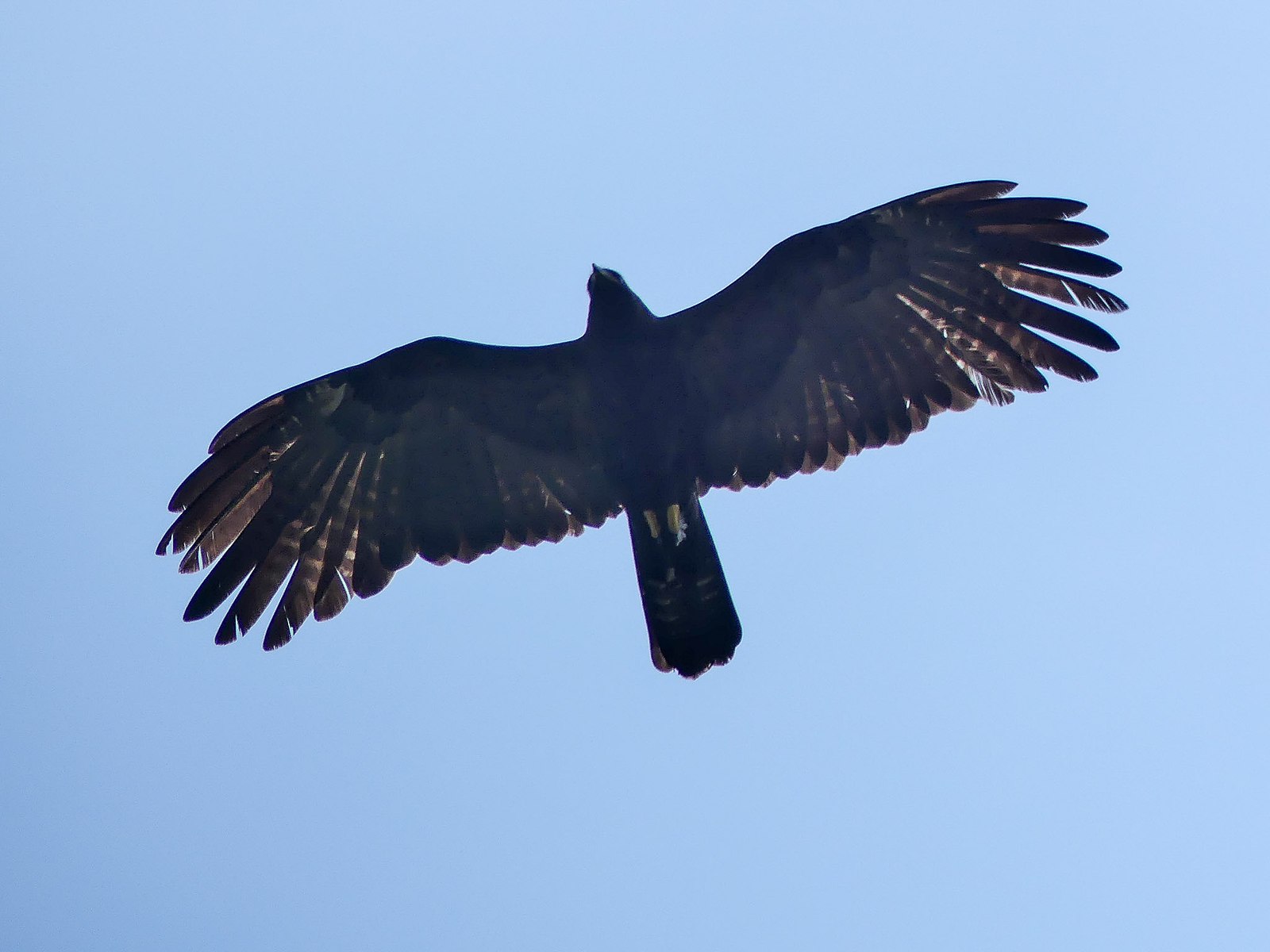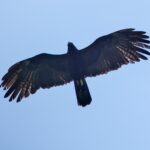The Black Eagle, also known as Verreaux’s Eagle (Aquila verreauxii) or Ictinaetus malaiensis, is a large bird of prey that can be found in tropical and subtropical regions of southern Asia and Australasia. They are known for their all-black plumage, yellow bill base, and long, pinched-in wings that give them a distinctive shape in flight. The life cycle of the Black Eagle is a fascinating study, encompassing breeding, nesting, feeding, and more.
Breeding and Nesting
The breeding season for Black Eagles typically occurs between January and April. During this time, the male performs spectacular courtship displays, which involve steep dives with folded wings and swoops up in a U shape into a vertical stall. This impressive display is part of the mating ritual, as the male tries to impress the female and secure a mate.
Once a pair has formed, the female lays 1 or 2 white eggs, which are blotched in brown and mauve. The eggs are incubated for approximately 35-40 days, with the female taking on the majority of the incubation duties. The young hatch and remain in the nest, being cared for by both parents.
Black Eagles are monogamous and form long-lasting pairs. The nest site is often reused year after year, with the pair adding more material to the structure each breeding season. The nest is typically built on a tall tree overlooking a steep valley and is made of branches and twigs, with a platform that measures 3 to 4 feet wide.
Parental Care and Fledging
 Image source: Black Eagle by Mike Prince
Image source: Black Eagle by Mike Prince
The female Black Eagle is primarily responsible for caring for the young, while the male provides food and protects the nest. The young hatch and remain in the nest, being fed and cared for by their parents. After approximately 2 months, the young Black Eagles fledge, or take their first flight, and begin to learn how to hunt and survive on their own.
Feeding Habits
Black Eagles are carnivores and feed on a variety of small mammals, birds, and reptiles. They are known for their slow flight, which allows them to scan the treetops for nests to raid. Black Eagles are prolific nest-predators, and have been documented carrying away entire bird’s nests to get at the chicks and/or eggs inside.
Population and Conservation Status
The Black Eagle is not considered threatened, but their numbers are decreasing due to habitat destruction. The total population size of the Black Eagle is around 10,000 individuals, with less than 100 breeding pairs in China and around 100-10,000 breeding pairs in Taiwan.
To protect this magnificent species, conservation efforts are crucial. Preserving the Black Eagle’s natural habitat, reducing human-wildlife conflict, and raising awareness about the importance of these birds are all important steps in ensuring the long-term survival of the Black Eagle.
Conclusion
The life cycle of the Black Eagle is a fascinating study in the natural world. From their impressive courtship displays to their prolific nest-predation, these birds of prey are truly remarkable creatures. While their numbers are declining, conservation efforts are underway to protect this species and ensure that future generations can continue to marvel at the majestic Black Eagle.
References:
– Verreaux’s eagle (Aquila verreauxii) – black eagle – DinoAnimals.com
– Black Eagle – Facts, Diet, Habitat & Pictures on Animalia.bio
– Black eagle – Wikipedia
– Verreaux’s eagle – Wikipedia

